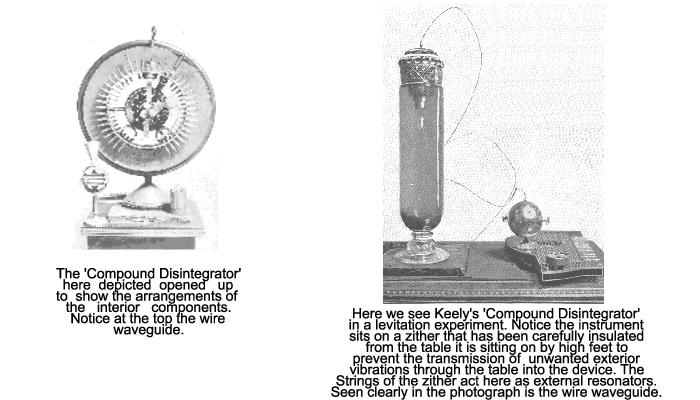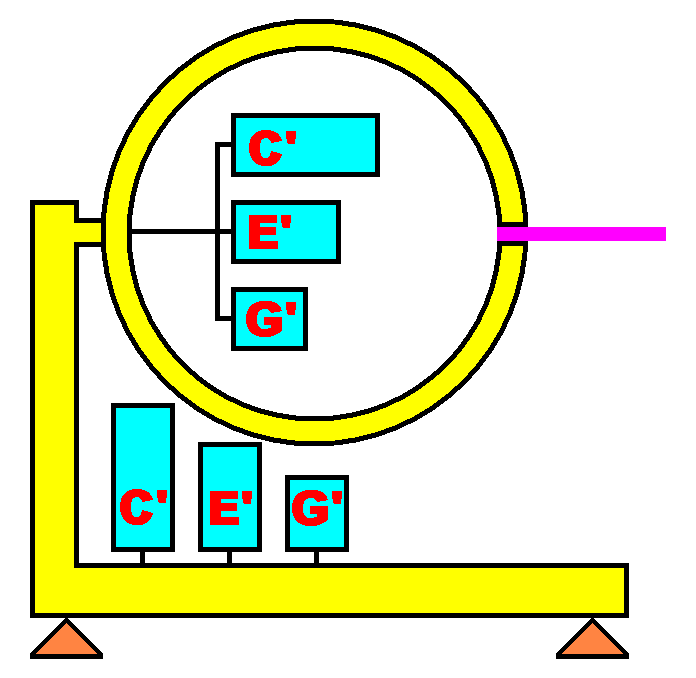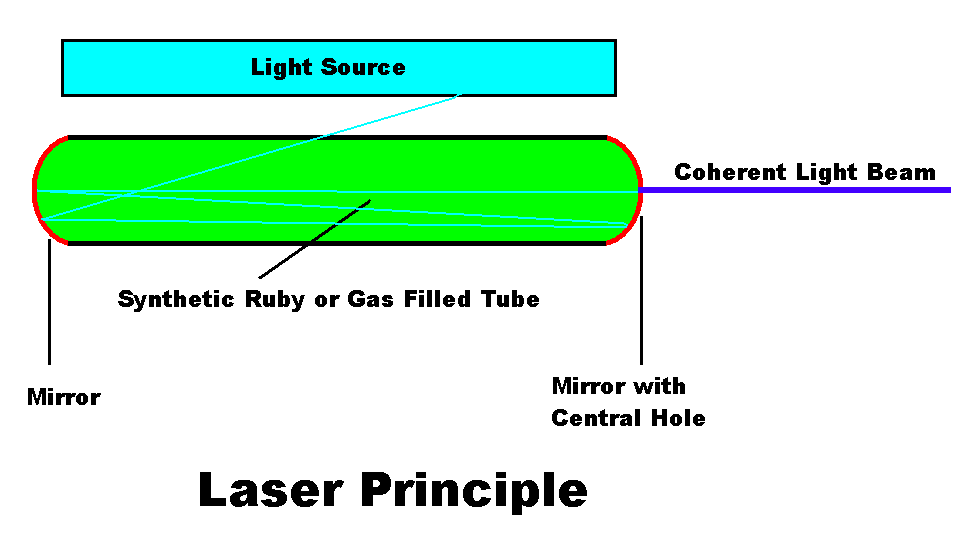















One of the things that tells us more than perhaps anything else is that all Keely's machines, regardless of what they are, Motor, Disintegrator, Air Ships etc, follow the same pattern of construction.
There invariably is some sort of a hollow body that has an INTERNAL as well as an EXTERNAL arrangement of resonators.
There is also a tiny opening through which a connection can be established, often by means of a tube or a wire made of silver, gold and platinum. In later designs he dispenses with this. It will become clear in a moment why.
At the heart of Keely's system is what he called in his earlier years his 'Compound Disintegrator'. I would like to stress here that this 'Compound Disintegrator' is part of each and every machine he built that I have knowledge of with the exception of his 'Hydro-Vacuo Motor' which appears to be an oddity that has little in common with all his other designs. Even his so called 'Musical Sphere' contains the device internally, albeit in much modified form. This dispensed with the need of connecting the 'Desintegrator' with the motor by means of a graduated wire of silver, gold and platinum or by some other means, what we today would call a waveguide.
The description of his "Compound Disintegrator" gives us essentially the blueprint to all of his machines, at least as far as the construction is concerned.

Stripping away most of the resonators and all the parts that existed only to improve performance and make the device more reliable we have this:

So, what does it do?
According to Keely ALL parts of the structure had to be tuned to a single note.
Let us assume we build this structure and by filing etc. manage to tune it to a pure middle C. On tapping this structure, say with a wooden mallet, we would hear the note C.
Let us also assume we have mounted 3 resonators inside and 3 outside, one of each tuned to C', E' and G' (all of them being harmonics of C).
What happens now when we strike, say the E' resonator on the outside?
Since, E' is a harmonic of C the vibration would be carried, virtually without loss, throughout the structure and the INSIDE resonator tuned to E' would resonate in unison with the outside resonator.
In other words what Keely did was to induce a specific frequency inside a hollow structure (cavity) by using the structure itself as the conductor and an external resonator as stimulant.
In the light of knowledge of his day there was really no other way of doing this.
To achieve this effect ALL parts of the structure had to be in PERFECT harmonic relationship to each other in order to work. A major scratch on the sphere for instance would change the resonant characteristics and make the whole thing useless. Everything would have to be graduated again in order to harmonise with the altered fundamental note. This was the biggest problem with Keely's machines. In my view he could, with a lot of effort, make his machines work, but a commercial exploitation with the tools of his day was out of reach. Keely knew this.
But Keely went further.
He managed to find notes in the spectrum where he could not only transmit harmonics of the fundamental but also the discordant notes that were required without disturbing the fundamental frequency of the structure and still carry them to the inside of the cavity. I believe he found that the scale of B-flat was most suitable for his purposes, since he constantly uses this scale for illustration.
Keely in essence created a specific, complex waveform INSIDE a resonant cavity using the entire structure as a conductor for the waveform, relying on resonance alone!
I seriously doubt that there are two people in the world today that can build such a device and make it work to the degree Keely did, even if given a set of blueprints.
We know today about the power of cavity resonators, the entire microwave industry is relying on it. WE ARE COOKING WITH IT, but hardly anyone notices the similarity with Keely's machines. But the question remains,
"WHAT, IF ANYTHING, DID KEELY INVENT?"
To answer this we must look at the basic diagram again. What do we know happens inside that magic sphere of his after the internal resonators are excited?
Well, they emit a sound of some sort.
Now what?
Well, the sound would travel, bounce of the confining sphere until it eventually escaped through a hole or a waveguide.
Sound familiar? Is there a modern device that does something like this?
YOU BET THERE IS!
For those that don't I'll quickly run through the principle.
When you look at it, though it may sound very sophisticated, the technology involved is quite crude. It is a cylinder of some sort fitted at each end with a parabolic mirror, one of which has a tiny hole in the centre. The cylinder may be a solid piece of synthetic ruby or a glass tube filled with some gas such as helium or a mixture of gases. There is a source of light mounted above or wrapped around the cylider for efficiency. It looks like this:

So far nothing exciting. Now what happens?
Some of the light strikes one of the mirrors and gets deflected. Since the cylinder is filled with gas, or the thing is a solid piece of artificial ruby the kind of light that strikes the mirror is of a specific frequency.
What happens now is interesting.
As I said light strikes the mirrors and is deflected, some straight into the other mirror. It starts to bounce back and forth until it eventually strikes the hole which is in one of the mirrors and escapes.
OK. Now we have a beam of light coming out of a hole, a bit like a torch. SO WHAT??
Well, the interesting thing is that the light coming out of the hole has properties that normal light just doesn't have. Like melting metal for instance.
NOW DO YOU SEE WHAT I AM DRIVING AT ??
If you want to you can look up all that stuff about coherent light and what it does at certain frequencies. It's fascinating stuff but I don't want to get into it any further because it is not helpful here.
The interesting thing is that by bouncing certain pure lightwaves in an enclosed cavity (as far as light is concerned anyway) back and forth it eventually emerges as a new form of energy capable of influencing matter.
Now, nearly all scientists today would question my use of the term "new form of energy", and argue that it is just good old light that has been aligned and thereby acquired new properties. Personally I would argue against that. I would argue that their 'coherent light beam' somehow influenced what Keely called the 'Triune Stream' and that the effects are due to this.
But, be that as it may. I don't care what my colleagues would say, as far as I am concerned what Keely invented was:
It is my theory that like the 'coherent light' of the laser; that is capable of inducing rapid molecular motion (heat etc.) the 'coherent sound' of Keely was capable of inducing gravitic changes.
Keely's problem was that apart from resonance, he had no other way of inducing specific waveforms inside a cavity and that imposed restrictions that dogged him all his life.
Next Chapter:
KEELY'S SECRET.
Contact:
Hans von Lieven, copyright 1999